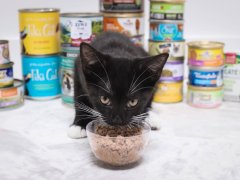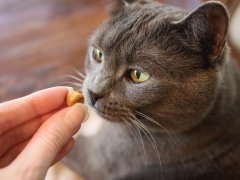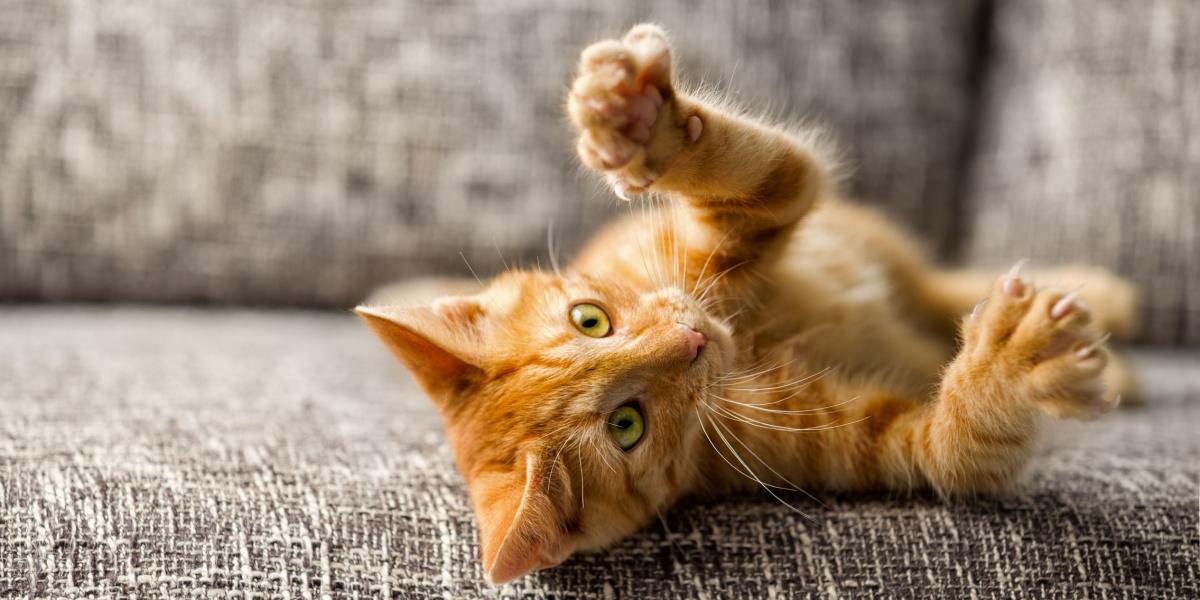
Most cat owners occasionally find what looks like a cat claw in the carpet, on a blanket, or on your cat’s scratching post. Have you ever wondered if it’s normal for cats to shed claws? Although shedding claws is usually a normal occurrence, there are times when this can indicate a health problem. Read on to learn why your cat sheds their claws this and how to tell if there is a problem brewing with your cat’s nails.
Cats naturally shed the outer layer of their claws every two to three months. Total claw loss, which can result from trauma or infection, is painful and requires veterinary treatment. If you are concerned about your cat’s nail health, talk to your veterinarian for advice.Key Takeaways
What Are Cat Claws and Why Do They Have Them?
A cat’s claws grow out from the nail bed in each digit. They are made from keratin, the same material as fur and whiskers, and have a rich supply of both blood vessels and nerves. Claws serve many purposes for your cat, including hunting, climbing, self-defense, and even scent marking. Needless to say, claws are essential for normal cat behavior.
Why Do Cats Shed Their Claws?
When a cat sheds its claws, it might look like the whole nail has come off, but it’s only the outer layer or claw sheath. As the nail grows from the nail bed, the outer layer of the nail loses its blood supply and eventually comes away. When this old claw is shed, it leaves behind a healthy, sharper claw beneath it.
This shedding of the older, more brittle nail helps keep your cat’s claws healthy, which is very important given how many vital roles they play in a cat’s life. The normal shedding cycle of a cat’s claws is approximately every two to three months.
When Is Claw Loss a Problem?
If you notice your cat’s claws are flaky or fragile, or they have lost a whole nail, this could be a sign of a problem. Some common disorders affecting the nails in cats include:
1. Trauma
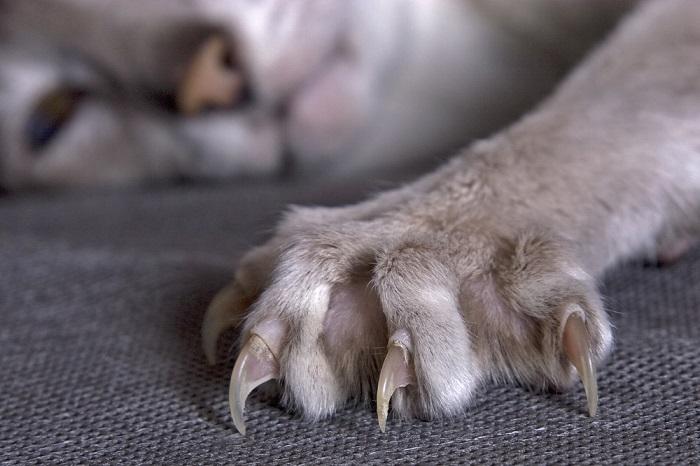
Cats occasionally tear or rip off their whole claw, something that requires urgent veterinary treatment.
Any pet parent knows a cat’s claws are sharp! Claws can become stuck in fabrics or furnishings, and if your cat pulls hard, this can lead to the traumatic removal of the nail from its nail bed. Nails can also be torn or ripped out when your cat gets into a fight or has an accident (a common sign of a road traffic collision are scuffed or broken claws).
Traumatic nail loss can be excruciating and might bleed a lot. Occasionally, the nail might only partially come away from the nail bed. If your cat tears or rips out a nail, get them to a veterinarian quickly for proper treatment and pain relief. Traumatic nail injuries often need to be treated under sedation or anesthetic to reduce the stress associated.
2. Infection
Common infections in the nail bed of cats are bacterial or fungal infections and can lead to complete claw loss. Infections are very painful and can make your cat feel very poorly. Your veterinarian might need to take swabs or hair plucks to determine what type of infection is present.
Treatment will depend on whether there is a bacterial or fungal agent present as they respond to different types of medication.
3. Immunodeficiency
Cats affected by FeLV (feline leukaemia virus) or FIV (feline immunodeficiency virus) can be at increased risk of infections, such as those described above. If your cat has problems with infections, including nail bed infections, your veterinarian might recommend testing for these conditions.
4. Cancer
Some types of cancer can affect the toes in cats. These can impact the nail bed too, leading to damage or loss of the claw.
Should I Trim My Cat’s Claws?

Your veterinarian can show you how to safely trim your cat’s nails.
Having sharp claws is not an automatic reason to trim your cat’s nails. This is especially true if your cat goes outdoors, as they will rely on their claws to climb and explore their environment, as well as for self-defense and hunting. Trimming your outdoor cat’s claws might inadvertently put them in danger when they are outside.
Indoor cats are less likely to wear their nails down normally, so it might in some cases be appropriate to trim them back. Older cats, obese cats, or those with joint disease also might need help keeping their nails short.
Nail trimming must be done very carefully with cat nail cutters to avoid causing harm to your cat. Ask your veterinarian for advice if you are unsure if you should trim your cats’ nails. If it is appropriate, they will be able to teach you how to do this safely. If you aren’t confident trimming your cat’s nails at home, either your veterinarian or local groomer will be able to help.
Providing house cats with plenty of scratching posts around the home can be sufficient to keep their claws healthy. Declawing cats is not recommended. It is not considered an ethical or appropriate option for any cat unless under express veterinary guidance for the treatment of a medical condition.
How To Tell if Your Cats Nails Are Too Long?
Overgrowth of the nail can be seen for many reasons in cats, and if the nail is too long, it will begin to grow back around on itself. In extreme cases, they might even grow into the paw pads. This is extremely painful and can lead to nasty infections.
To check if your cat’s claw is a good length, you can gently expose the claw when it is retracted and assess whether it extends beyond the paw pad. If it is OK, it will not extend beyond the pad. This is often easiest to do on a horizontal surface, with your cat’s paw placed on the surface before you expose the claw.
What About Claw Caps?
There is a growing trend for claw caps, also called nail caps or soft paws. These are plastic caps that are glued onto your cat’s nails. They will render your cat’s claws useless but will act to protect you and your furniture from damage. They can be uncomfortable for cats to wear and hinder your cat’s ability to play and climb normally.
Nail caps are not suitable for outdoor cats, and not every indoor cat will tolerate them. Consider carefully if your cat really needs claw caps before considering their use, and never use them purely for cosmetic reasons.
Final Thoughts
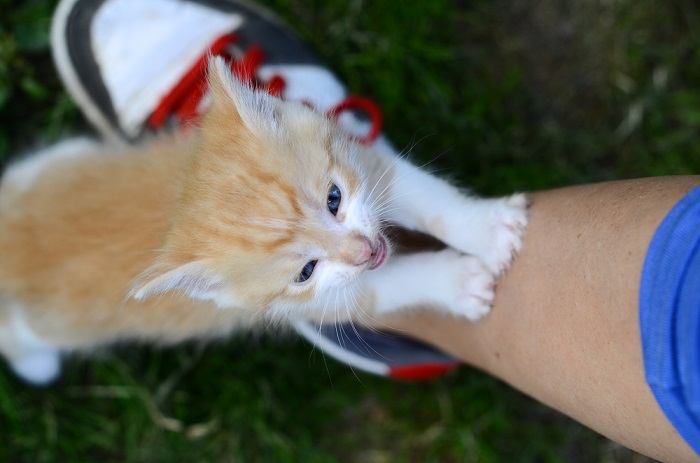
It’s normal to find a shed claw now and then, but if your cat loses an entire claw, or the claws seem injured, contact your vet.
Cat’s claws serve many essential roles in normal cat behavior. While it is normal for your cat to shed the outer nail husk, loss of the whole claw can mean there is a medical problem and warrants a checkup with your veterinarian.
Also Read: How To Get Your Cat To Use A Scratching Post
Related Symptoms:
- Declawing Cats: What You Need To Know
- Feline Leukemia Virus (FeLV): Causes, Symptoms, & Treatment
- Feline Immunodeficiency Virus (FIV): Symptoms, Causes, Diagnosis & Treatment
Frequently Asked Questions
How often do cats shed their claws?
Typically, a healthy cat will shed the outer layer of their claws every two to three months, leaving a new healthy claw behind. They do not shed the whole claw.
What happens if a cat's nail comes off?
Cats will naturally shed their claws every two to three months. They don’t lose the whole claw, just the outer layer. If you are finding claws around the home, typically, this is why. However, if your cat loses their whole claw, not just the outer layer, this can result in a problem.
Common causes of total claw loss include trauma and infections. Typically this can be very painful for your cat and might result in bleeding.
Should I trim my cats claws?
You should only trim your cats’ claws if they become too long, not just because they are too sharp! Ask your veterinarian for advice if you are unsure whether your cat needs a nail trim. Providing a scratching post or toy can be a great way to help naturally keep your cat’s claws in excellent health.






